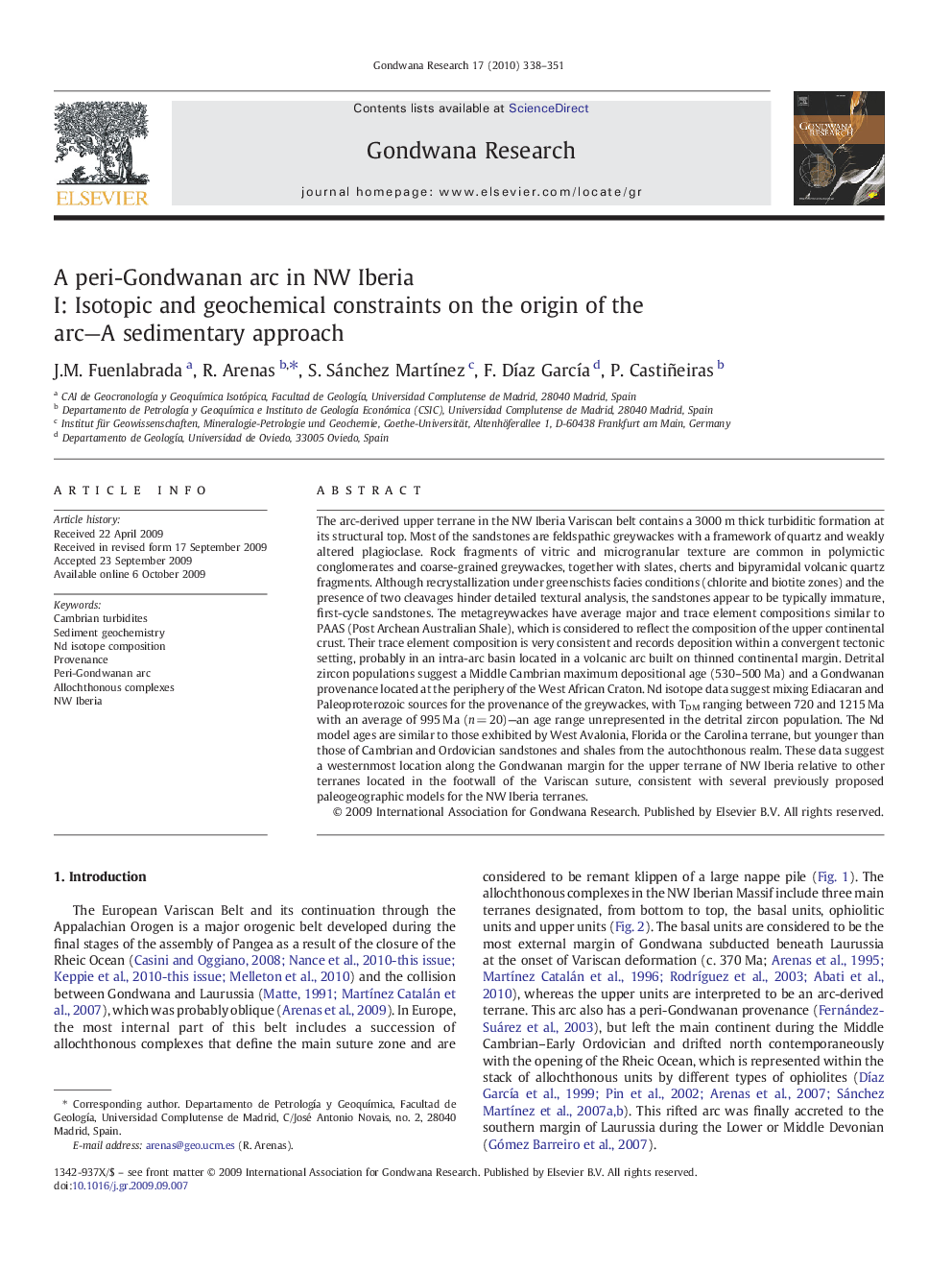| Article ID | Journal | Published Year | Pages | File Type |
|---|---|---|---|---|
| 4727236 | Gondwana Research | 2010 | 14 Pages |
The arc-derived upper terrane in the NW Iberia Variscan belt contains a 3000 m thick turbiditic formation at its structural top. Most of the sandstones are feldspathic greywackes with a framework of quartz and weakly altered plagioclase. Rock fragments of vitric and microgranular texture are common in polymictic conglomerates and coarse-grained greywackes, together with slates, cherts and bipyramidal volcanic quartz fragments. Although recrystallization under greenschists facies conditions (chlorite and biotite zones) and the presence of two cleavages hinder detailed textural analysis, the sandstones appear to be typically immature, first-cycle sandstones. The metagreywackes have average major and trace element compositions similar to PAAS (Post Archean Australian Shale), which is considered to reflect the composition of the upper continental crust. Their trace element composition is very consistent and records deposition within a convergent tectonic setting, probably in an intra-arc basin located in a volcanic arc built on thinned continental margin. Detrital zircon populations suggest a Middle Cambrian maximum depositional age (530–500 Ma) and a Gondwanan provenance located at the periphery of the West African Craton. Nd isotope data suggest mixing Ediacaran and Paleoproterozoic sources for the provenance of the greywackes, with TDM ranging between 720 and 1215 Ma with an average of 995 Ma (n = 20)—an age range unrepresented in the detrital zircon population. The Nd model ages are similar to those exhibited by West Avalonia, Florida or the Carolina terrane, but younger than those of Cambrian and Ordovician sandstones and shales from the autochthonous realm. These data suggest a westernmost location along the Gondwanan margin for the upper terrane of NW Iberia relative to other terranes located in the footwall of the Variscan suture, consistent with several previously proposed paleogeographic models for the NW Iberia terranes.
